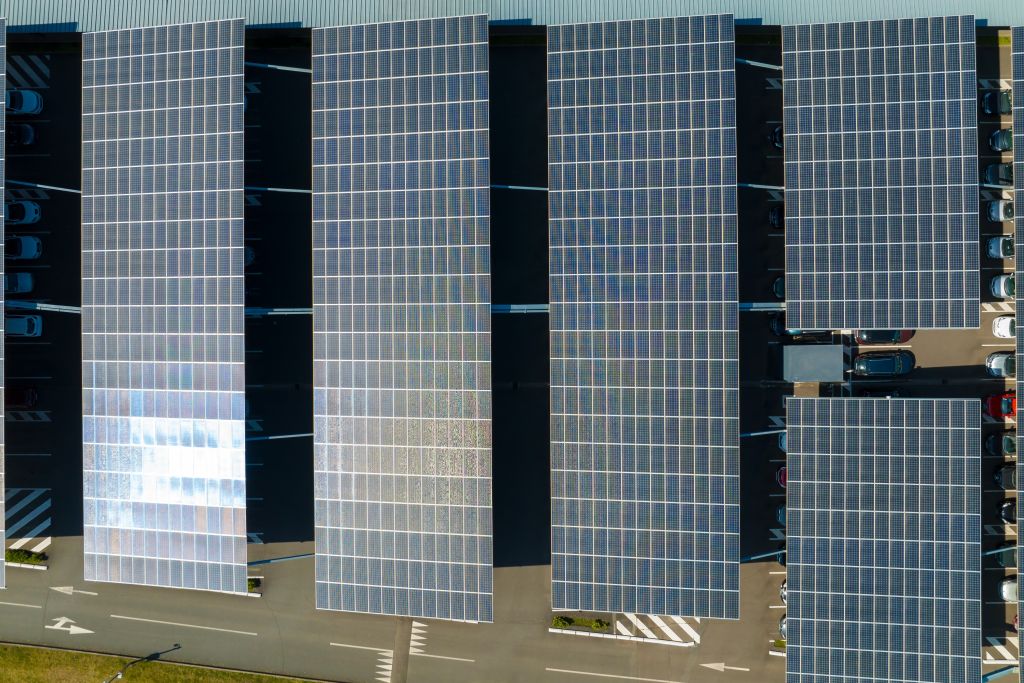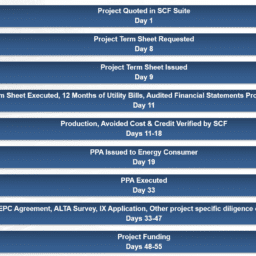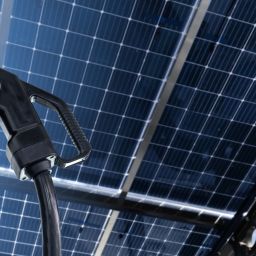
In recent years, the adoption of solar energy has surged, with organizations looking to cut costs and embrace sustainability. Despite a growing demand for commercial-scale solar energy, converting interest into projects can be challenging. It’s crucial to optimize conversion rates through strategic planning and tailored offerings. Here’s a quick look at ways developers can improve conversion rates:
Determine Economic Viability Immediately
Before getting too far down the road, it’s essential to assess the economic feasibility of a commercial solar project. Customers, especially in the commercial sector, are keen on understanding the financial benefits and payback period associated with their investment. An economic analysis should include the following:
Calculate Payback Period
Evaluate the payback period for the customer, knowing what incentives they may qualify for, and/or have the ability to monetize. Consider factors such as energy savings, tax incentives, rebates and potential revenue streams from renewable energy credits (RECs). If the organization plans on using debt to capitalize the system, be sure to include the cost of that debt into your analysis. If a company is using cash from its’ balance sheet, analyze the potential return they would receive if they invested that cash into the market, as this serves as opportunity cost. Additionally, provide detailed projections on electricity cost savings over the lifespan of the system, using historic AND recent energy inflation rates.
Impact of Energy Storage
Energy storage can enhance the project’s value proposition by mitigating demand charges, creating time-of-use arbitrage, and enabling participation in demand response programs. Additionally, for some customers energy storage will serve mission critical functions and will be required for backup power.
Power Purchase Agreements (PPAs):
Explore whether a PPA could offer meaningful and immediate savings to the customer. PPAs can mitigate the upfront capital investment required for solar projects and provide predictable electricity pricing over the contract term. Highlight the potential for third-party developers to leverage tax incentives and economies of scale to offer competitive PPA rates. Additionally, emphasize the flexibility of PPAs in accommodating fluctuating energy needs and evolving regulatory landscapes.

Economic Benefit of Adding EV Fast Chargers
Incorporating electric vehicle (EV) fast chargers into commercial solar projects can significantly enhance economic appeal. Consider the following factors:
Potential Revenue Share
Offer a revenue-sharing model to the host customer, demonstrating how the revenue generated from EV charging can surpass savings from a PPA. Highlight the scalability of EV charging infrastructure and the potential for future revenue growth as the EV market expands. Collaborate with SCF and its EV charging network to optimize charger placement, pricing models, and customer engagement strategies.
Added Amenity
Highlight the added amenity that EV fast chargers provide to customers, tenants, and visitors. Beyond revenue share, emphasize the role of EV charging stations in enhancing customer experience, fostering loyalty, and differentiating the business from competitors.
Customer Attraction:
Emphasize how the presence of EV fast chargers can attract new customers to the business, further enhancing its brand reputation and marketability. Position the business as a leader in sustainability and innovation by offering convenient and eco-friendly charging solutions. Collaborate with local governments, utilities, and transportation agencies to promote EV adoption and incentivize charger installation.
Follow a Fixed Timeline
Establishing a fixed timeline for the project and obtaining buy-in from the customer is crucial for maintaining momentum and ensuring timely execution. Here’s a suggested timeline:
Pricing Acceptance to Term Sheet Signing
Ensure clarity on pricing and swiftly move towards signing a term sheet outlining project details and terms, within 30 days. Provide transparent communication regarding project milestones, deliverables, and potential risks. Address any concerns or objections raised by the customer promptly and proactively.
Term Sheet Signing to Definitive Agreement Signing
Facilitate smooth negotiations leading to the signing of a definitive agreement within an additional 30 days, which papers the legal and financial aspects of the project. Collaborate with legal and financial advisors to streamline contract negotiations, identify any showstoppers and minimize delays. Provide the customer with comprehensive documentation and support to expedite the agreement process.

Definitive Agreement Signing to Commencement of Construction
Transition seamlessly from agreement signing to the commencement of construction activities within an additional 60-90 days, keeping the customer informed and engaged throughout the process. Coordinate with contractors & vendors to develop a detailed project schedule and resource plan. Conduct regular progress meetings and site inspections to ensure adherence to quality standards and safety protocols.
Commencement to Placed in Service
Execute the project efficiently, adhering to the agreed timeline of 90-180 days, and ensure a smooth transition to the operational phase upon completion. Conduct comprehensive testing and commissioning of the solar and EV charging systems to verify performance and functionality. Provide necessary education & training to facility staff on any customer responsibilities. Celebrate project milestones and achievements with the customer to reinforce the partnership and commitment to mutual success.
By implementing these strategies of commercial solar projects, you can significantly improve conversion rates and drive greater adoption of sustainable energy solutions in the commercial sector.








